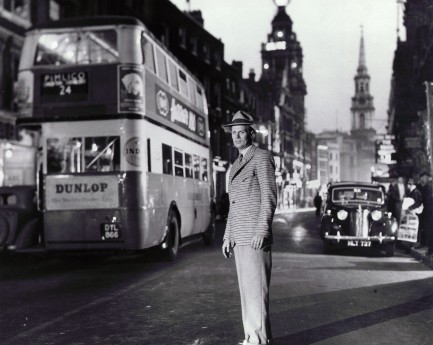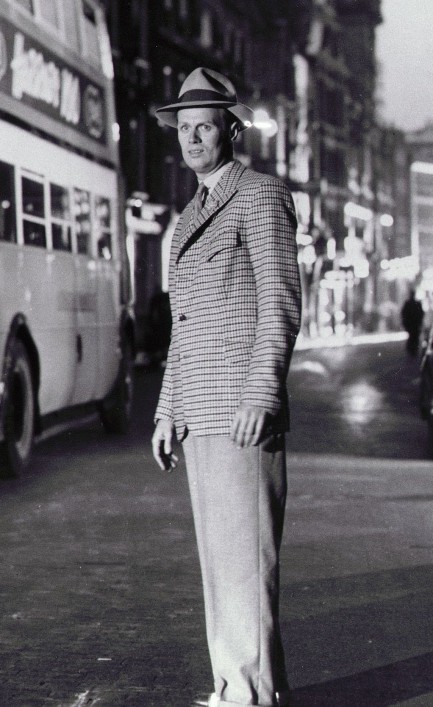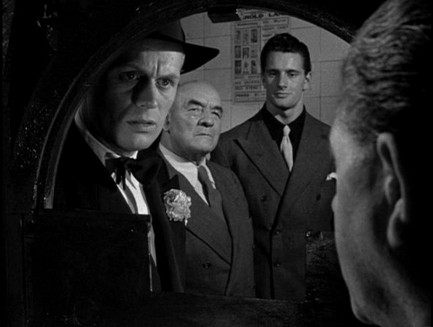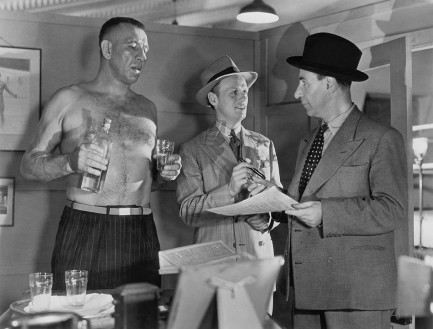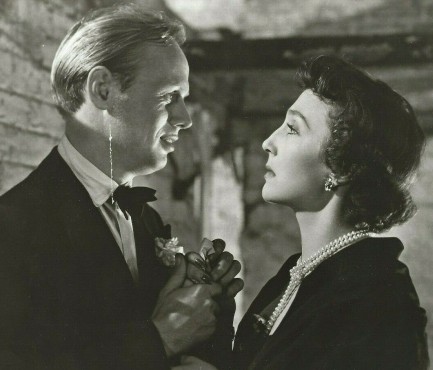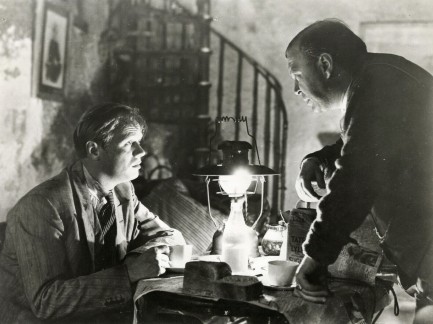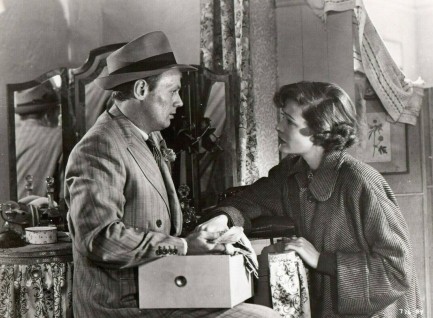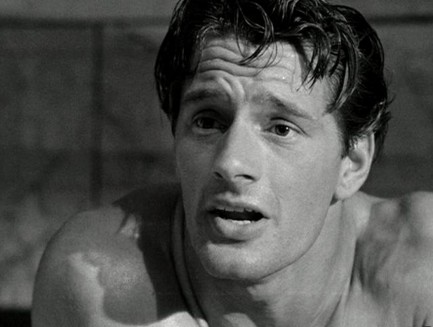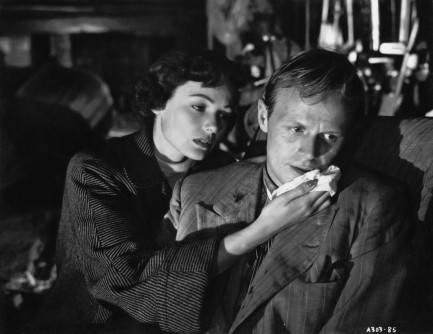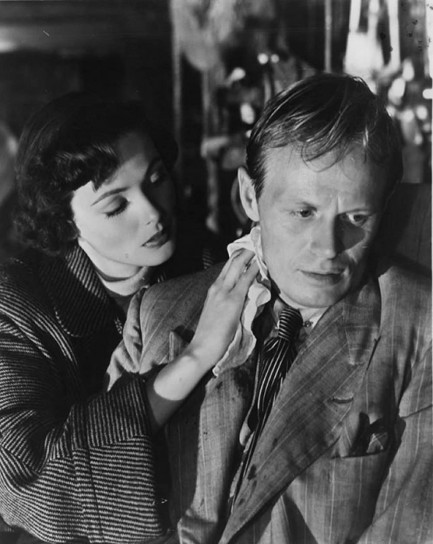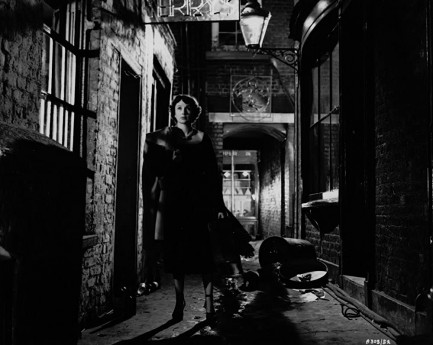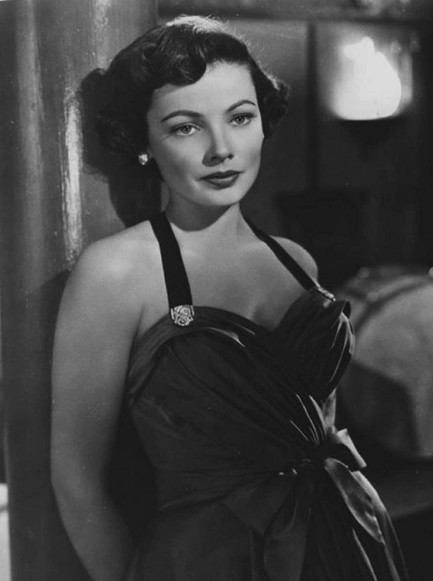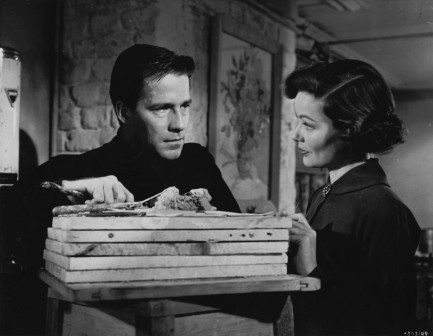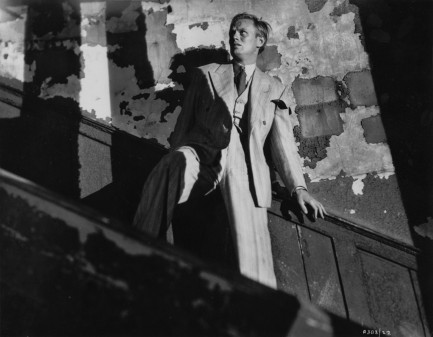| Modern Pulp | Jun 12 2022 |

Caught between a rock and an ugly place.
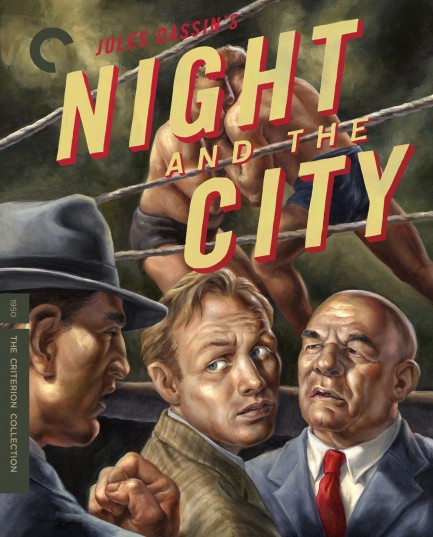
A few days ago we wrote about the 1950 film noir Night and the City, and our poking around led to the discovery that the Blu-Ray edition comes with a box cover by one of our favorite modern artists Owen Smith. He first came to our attention because he painted covers for the Daniel Chavarría crime novels Adios Muchachos and Tango for a Torturer, and we see that he remains a unique stylist, perhaps even a modern pulp master. His depiction of star Richard Widmark trapped between tough guys Mike Mazurki and Stanislaus Zbyszko captures the essence of the movie without being an actual scene from it. We like the choice.
While Night and the City revolves around wrestling, it seems that Smith has been busy with another ring art—boxing. He's created quite a few works along those lines, and we've uploaded several below. We'd say he has the subject of men who've had the snot beaten out of them pretty well conquered. Finally, since we brought it up, we'd like to recommend—for adventurous readers—the aforementioned Chavarría novels. Due to our time living in Guatemala and traveling around the region we developed an interest in all things Cuba. He brings that island to life in a way few authors do. Read what we wrote about him here, and see more Smith here and here.
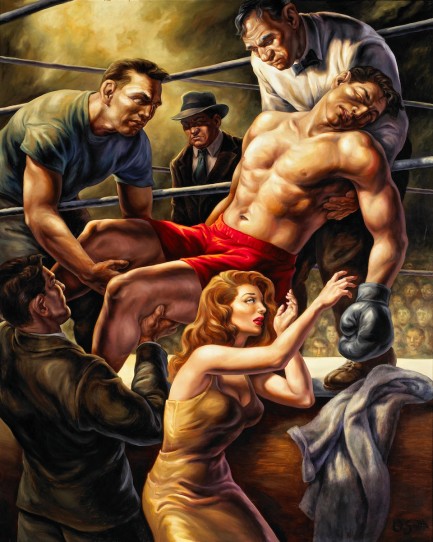
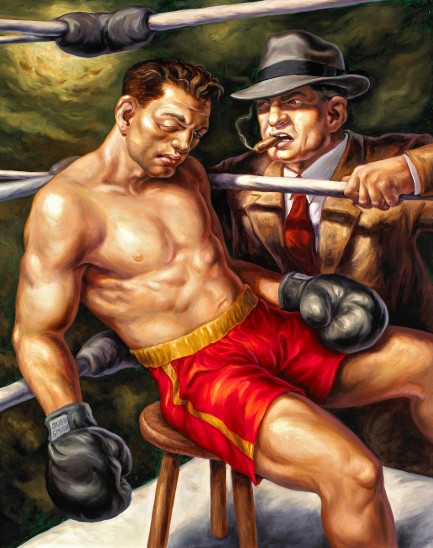
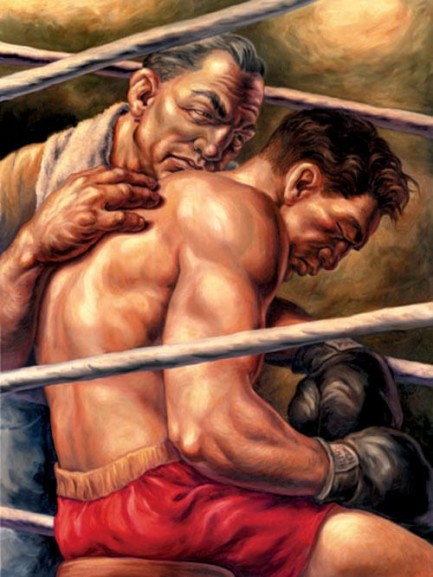
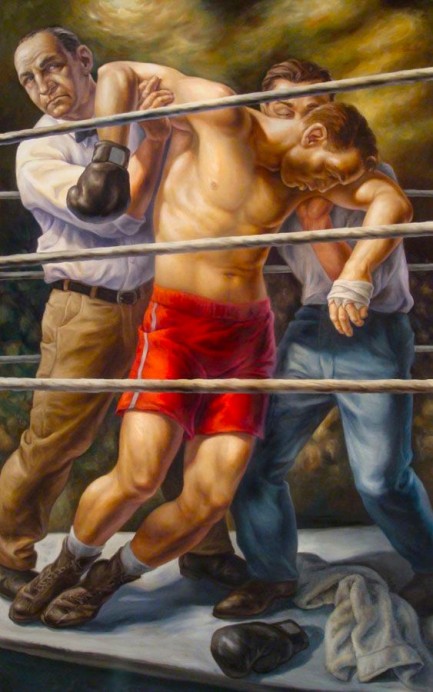
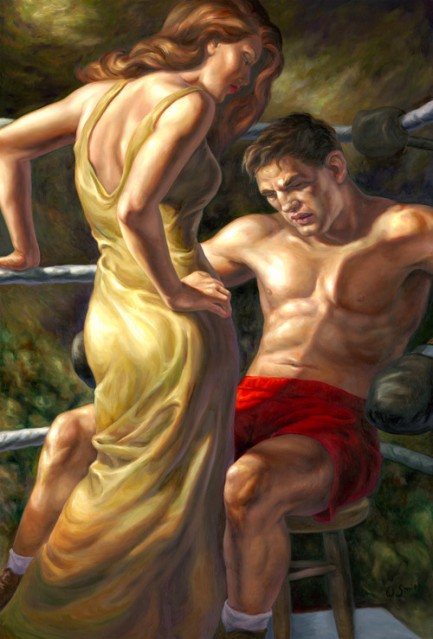
| Vintage Pulp | Jun 9 2022 |

An American con man in London.
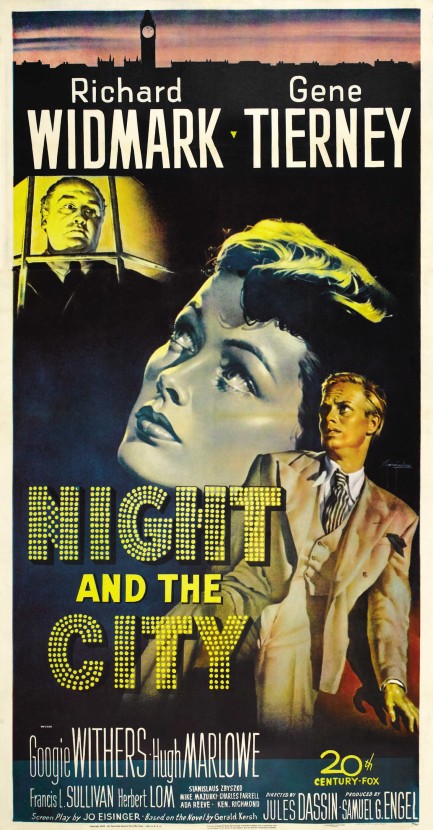
Amazing that we haven't talked in detail about Night and the City yet, but all things in good time, and the time is now. Directed by Jules Dassin, this is one of the top entries in the film noir cycle, featuring Richard Widmark playing an American named Harry Fabian who's trying to hustle his way to riches in postwar London. Being a hustler, he long ago gave up the idea of working a fair job for a fair wage, and instead has been involved in so many spurious get-rich-quick schemes that nobody believes in him anymore. But when he stumbles upon the greatest greco-roman wrestler of all time, he cooks up a plot to take over wrestling promotion in London—and this scheme is a sure thing.
Widmark's performance hinges upon nervous energy and emotional desperation, as he shapes Harry Fabian into one of the greatest characters in the film noir annals, a man who's equal parts pitiable, ridiculous, and dangerous. He's the ultimate noir loser, a man who simply cannot see the forest for the trees. Gene Tierney, who any normal man would worship twenty-four hours a day, plays his girlfriend, beautiful and forbearing, but whose presence Fabian warps into yet another reason to grift his way to a fortune. He feels that a guy in his meager circumstances doesn't deserve her—which completely overlooks the fact that he already has her.
As Widmark tries to hold his caper together the rug is pulled from under him multiple times, yet like any serious hustler he manages to stumble improvisationally onward with lies and wishful thinking. His constant sowing of the seeds of his destruction is hard to watch, because as viewers we can see where and how he's going to fail—or possibly, just possibly, fate will grant him a miracle though he very much deserves to fail. One of the cool things about film noir is that its leads tend to be terribly flawed, but here Widmark is a human clearing house for bad character traits, and the worst of them is the one he has no control over—he was simply born under a bad star.
All in all Night and the City deserves its reputation. We have a few quibbles, but they're purely personal. For example, female leads in these old films often perform a song and Tierney's is atrocious, sadly. And if we were going to be very picky we'd add that it's also hard to buy the wonderful Tierney and the unctuous, work-averse Widmark as a couple, but of course, willing suspension and all that jazz requires that we go with it. The movie works even if Widmark refuses to. Give it a watch. You won't regret it. Night and the City had its world premiere today in 1950.
